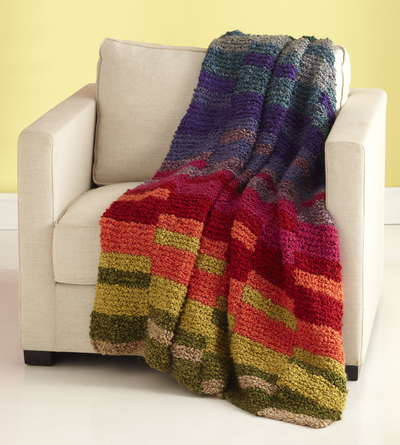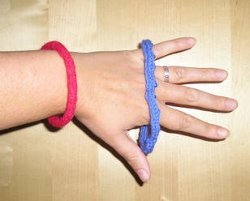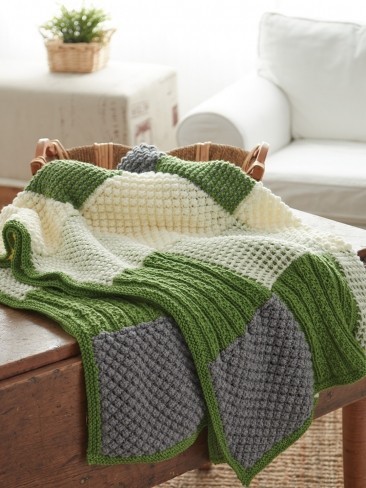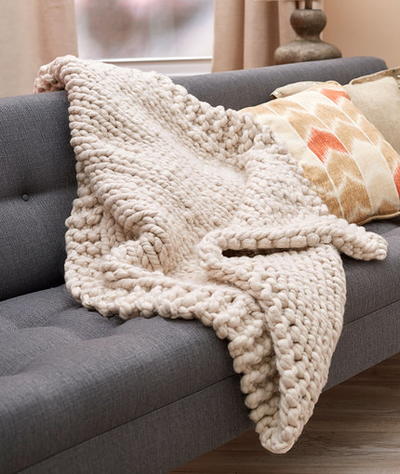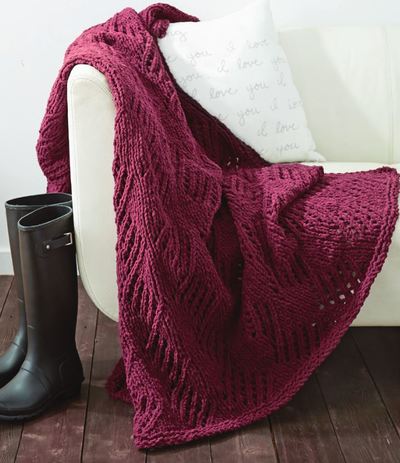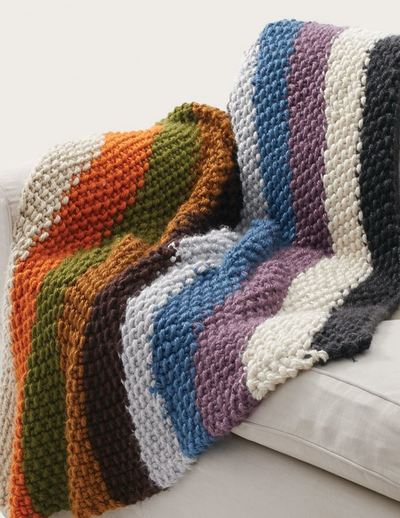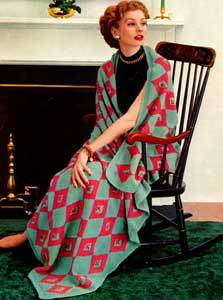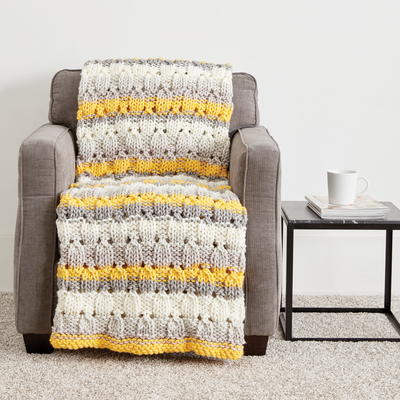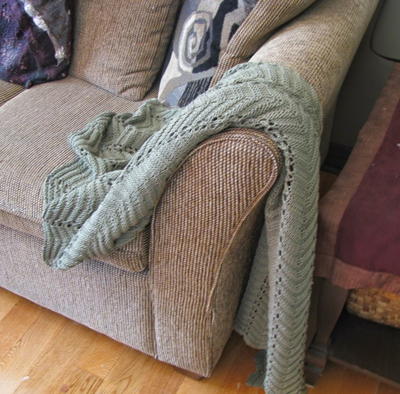Light Spectrum Afghan
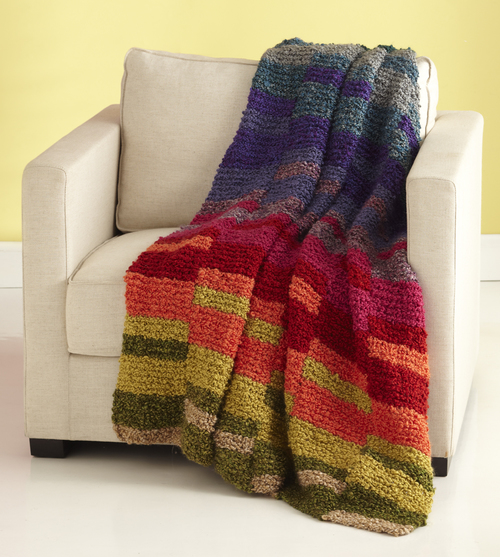
Comforting and colorful, this Light Spectrum Afghan is sure to be a favorite in any household. The bright colors of this knit afghan pattern will make it a welcome addition to any room, and science fans will get a kick out of its name. Beginning knitters will love this simple knit throw pattern that offers an easy way to decorate a room and keep your family warm.

Knitting Needle Size11 or 8 mm
Yarn Weight(5) Bulky/Chunky (12-15 stitches for 4 inches)
Size:
About 48 x 50 in. (122 x 127 cm)
Materials:
-
LION BRAND® SILKY TWIST (Art. #927)
- #207 Oatmeal 1 ball (A)
- #206 Cactus 1 ball (B)
- #201 Olive 1 ball (C)
- #214 Tangerine 1 ball (D)
- #209 Cherry Red 1 ball (E)
- #203 Paradise Pink 1 ball (F)
- #212 Purple Haze 1 ball (G)
- #211 Hyacinth 1 ball (H)
- #213 Amethyst 1 ball (I)
- #210 Ocean 1 ball (J)
- #204 Ash Mist 1 ball (K)
- #205 Teal 1 ball (L)
- or colors of your choice
- LION BRAND® knitting needles size 11 (8 mm)
- LION BRAND® large-eyed blunt needle
Gauge:
10 stitches + 16 rows = about 4 in. (10 cm) in Garter stitch (knit every row).
BE SURE TO CHECK YOUR GAUGE.
When you match the gauge in a pattern, your project will be the size specified in the pattern and the materials specified in the pattern will be sufficient. If it takes you fewer stitches and rows to make a 4 in. [10 cm] square, try using a smaller size hook or needles; if more stitches and rows, try a larger size hook or needles.
Notes:
1. Panels are worked in Garter stitch (knit every row), changing color to create stripes. To change color, cut the old color leaving an end about 8 in. (20 cm) long, then begin working with new color, leaving a long tail on the new color as well. If you like, you may knot the old and new yarn tails together. When you have finished knitting the Panel, unknot the ends and weave them into the Panel.
2. 7 Panels are knit, then sewed together to make the Afghan.
3. Since this design does not include a border, you may wish to slip the first stitch of every row to keep the sides of the Panels neat.
PANEL #1 (make 4)
With A, cast on 17 stitches.
Knit for 6 rows.
Change to B and knit for 12 rows.
Change to C and knit for 12 rows.
Change to B and knit for 6 rows.
Change to C and knit for 6 rows.
Change to D and knit for 12 rows.
Change to E and knit for 12 rows.
Change to D and knit for 6 rows.
Change to E and knit for 6 rows.
Change to F and knit for 12 rows.
Change to G and knit for 12 rows.
Change to F and knit for 6 rows.
Change to G and knit for 6 rows.
Change to H and knit for 12 rows.
Change to I and knit for 12 rows.
Change to H and knit for 6 rows.
Change to I and knit for 6 rows.
Change to J and knit for 12 rows.
Change to K and knit for 12 rows.
Change to J and knit for 6 rows.
Change to K and knit for 6 rows.
Change to L and knit for 12 rows.
Bind off.
PANEL #2 (make 3)
With B, cast on 17 stitches.
Knit for 12 rows.
Change to A and knit for 6 rows.
Change to B and knit for 6 rows.
Change to C and knit for 12 rows.
Change to D and knit for 12 rows.
Change to C and knit for 6 rows.
Change to D and knit for 6 rows.
Change to E and knit for 12 rows.
Change to F and knit for 12 rows.
Change to E and knit for 6 rows.
Change to F and knit for 6 rows.
Change to G and knit for 12 rows.
Change to H and knit for 12 rows.
Change to G and knit for 6 rows.
Change to H and knit for 6 rows.
Change to I and knit for 12 rows.
Change to J and knit for 12 rows.
Change to I and knit for 6 rows.
Change to J and knit for 6 rows.
Change to K and knit for 12 rows.
Change to L and knit for 12 rows.
Change to K and knit for 6 rows.
Bind off.
Finishing:
Alternating Panels #1 and #2, sew long sides of Panels together.
Weave in ends.
Read NextHarlequin Afghan
Your Recently Viewed Projects
3cats2love
Jun 27, 2017
This looks like a fun to make afghan pattern. When I first saw it I thought it was striped across, but then I saw the stripes are in panels so they meet at different places. Love it! This could be a great stash buster pattern, and just use whatever colors you have on hand.
Waltam2007 4684111
Feb 13, 2014
Is there a tutorial on how to sew together the panels? I slipped stitched my first rows. Thanks
Lisa
Nov 14, 2018
You actually don't slip the first stitch of the row when you intend to sew the panels together, you should be able to compensate for it as you sew to even them up.
kamtravels2
Jul 11, 2013
Curious...why wouldn't they line up if you are using the same yarn brand and weight?
Lisa
Aug 11, 2014
Because the pattern for the 2 different panels is different. the first one has you knitting for 6 rows, the second one has you knitting for 12 rows-this is deliberate to give the design depth. hope this helps.
sburdess2 7786042
Apr 22, 2013
Do you have a pattern for this beautiful afghan to crochet I can't knit
Prince
Apr 08, 2013
For a 'Beginner' Pattern it's a little complicated and to follow it you'd need a good bit of each color. I'd crochet a desired width and change colors randomly -within or at the end of - desired rows.
Lisa
Aug 11, 2014
This is the beginners pattern that I've started using with all my new students its incredibly simple to follow and gives plenty of practice on the basic skills. as far as the yarn goes, you need 12 -130 yard balls in 12 colours-making it an excellent stash buster! I find everything about your comment completely invalid and feel it might deter other beginning knitters from giving it a go, furthermore, your crochet comments are probably better suited to a crochet web page than a knitting one.
canuckle49
Apr 02, 2013
Hi Jenna, I am missing something here ! I don't understand why I couldn't just keep knitting with different yarns ? I think for me it would be better than sewing panels together. I am not an experienced knitter. THanks so much if you can explain this to me !
Lisa
Nov 14, 2018
The colours in the panels are knit for different amounts of rows, the only way to achieve this look successfully would be to knit it as it is indicated in the pattern. The uneven rows and lines of the pattern are what gives it depth and make it unique. It you just continued knitting you would have stripes, anyone can do stripes, this pattern offers a lot more than the standard stripes. Happy knitting!
bagheera21 0732434
Apr 02, 2013
Very cute and def. will try knitting it. But why knit so many different panels and then sew together? I'm not going to sew my panels together. I'm just going to keep knitting and joining in the yarns.
jennafontenot 6004 834
Apr 02, 2013
They are knit in panels because the lines do not match up on each panel. some lines are thicker/thinner than their counterpart in the opposing panel. it gives the blanket a different demention.
Report Inappropriate Comment
Are you sure you would like to report this comment? It will be flagged for our moderators to take action.
Thank you for taking the time to improve the content on our site.

